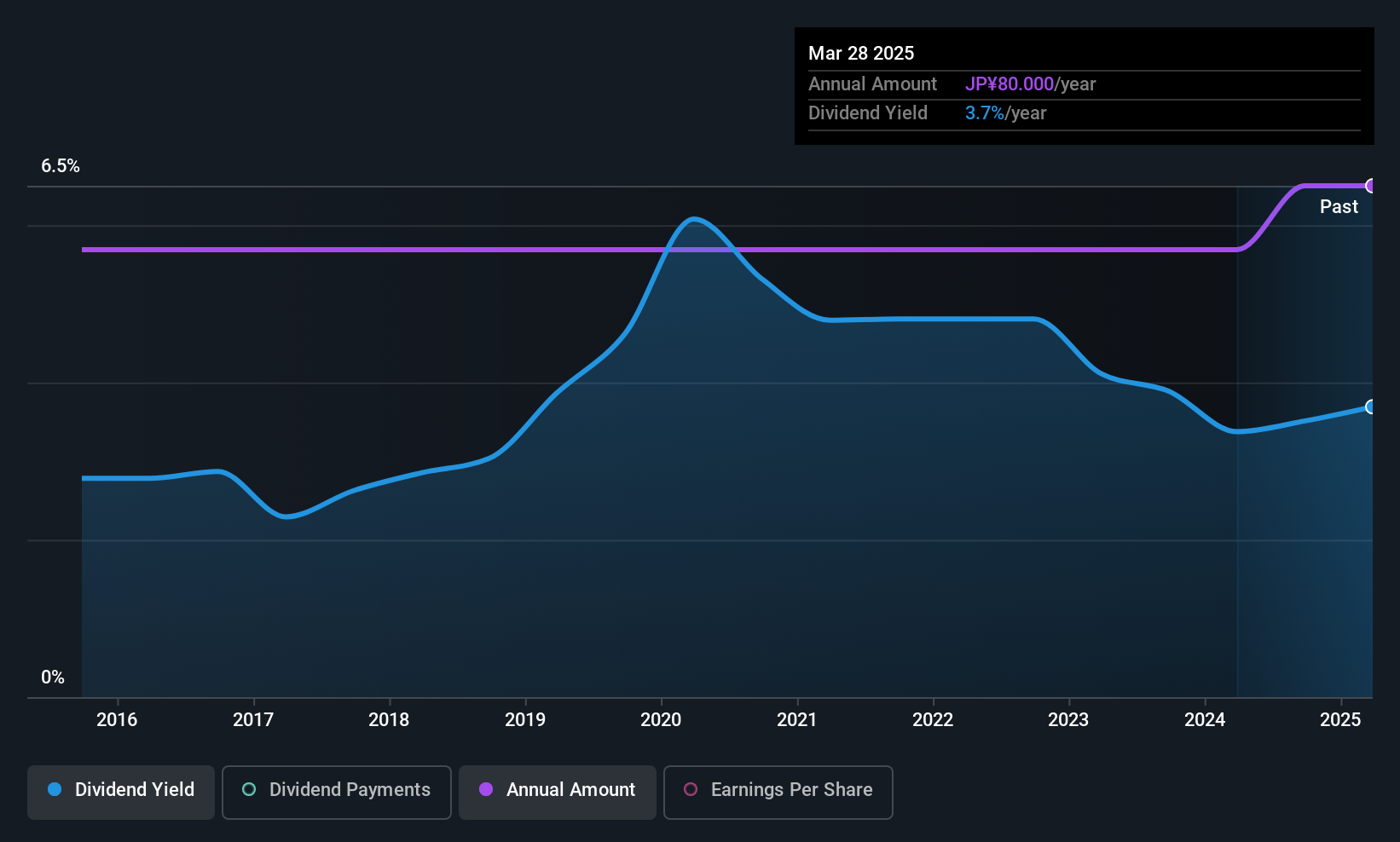The Bank of Saga Ltd. (TSE:8395) will pay a dividend of ¥45.00 on the 3rd of December. Based on this payment, the dividend yield for the company will be 3.1%, which is fairly typical for the industry.
While the dividend yield is important for income investors, it is also important to consider any large share price moves, as this will generally outweigh any gains from distributions. Investors will be pleased to see that Bank of Saga's stock price has increased by 30% in the last 3 months, which is good for shareholders and can also explain a decrease in the dividend yield.
Bank of Saga's Earnings Will Easily Cover The Distributions
Unless the payments are sustainable, the dividend yield doesn't mean too much.
Bank of Saga has a long history of paying out dividends, with its current track record at a minimum of 10 years. While past records don't necessarily translate into future results, the company's payout ratio of 24% also shows that Bank of Saga is able to comfortably pay dividends.
Over the next year, EPS could expand by 16.7% if recent trends continue. If the dividend continues on this path, the future payout ratio could be 22% by next year, which we think can be pretty sustainable going forward.

Check out our latest analysis for Bank of Saga
Bank of Saga Has A Solid Track Record
Even over a long history of paying dividends, the company's distributions have been remarkably stable. Since 2015, the dividend has gone from ¥70.00 total annually to ¥90.00. This works out to be a compound annual growth rate (CAGR) of approximately 2.5% a year over that time. Dividends have grown relatively slowly, which is not great, but some investors may value the relative consistency of the dividend.
The Dividend Looks Likely To Grow
Investors who have held shares in the company for the past few years will be happy with the dividend income they have received. Bank of Saga has seen EPS rising for the last five years, at 17% per annum. Bank of Saga definitely has the potential to grow its dividend in the future with earnings on an uptrend and a low payout ratio.
Bank of Saga Looks Like A Great Dividend Stock
In summary, it is always positive to see the dividend being increased, and we are particularly pleased with its overall sustainability. The company is easily earning enough to cover its dividend payments and it is great to see that these earnings are being translated into cash flow. All of these factors considered, we think this has solid potential as a dividend stock.
Investors generally tend to favour companies with a consistent, stable dividend policy as opposed to those operating an irregular one. However, there are other things to consider for investors when analysing stock performance. Now, if you want to look closer, it would be worth checking out our free research on Bank of Saga management tenure, salary, and performance. If you are a dividend investor, you might also want to look at our curated list of high yield dividend stocks.
Valuation is complex, but we're here to simplify it.
Discover if Bank of Saga might be undervalued or overvalued with our detailed analysis, featuring fair value estimates, potential risks, dividends, insider trades, and its financial condition.
Access Free AnalysisHave feedback on this article? Concerned about the content? Get in touch with us directly. Alternatively, email editorial-team (at) simplywallst.com.
This article by Simply Wall St is general in nature. We provide commentary based on historical data and analyst forecasts only using an unbiased methodology and our articles are not intended to be financial advice. It does not constitute a recommendation to buy or sell any stock, and does not take account of your objectives, or your financial situation. We aim to bring you long-term focused analysis driven by fundamental data. Note that our analysis may not factor in the latest price-sensitive company announcements or qualitative material. Simply Wall St has no position in any stocks mentioned.
About TSE:8395
Good value with proven track record and pays a dividend.
Market Insights
Community Narratives



